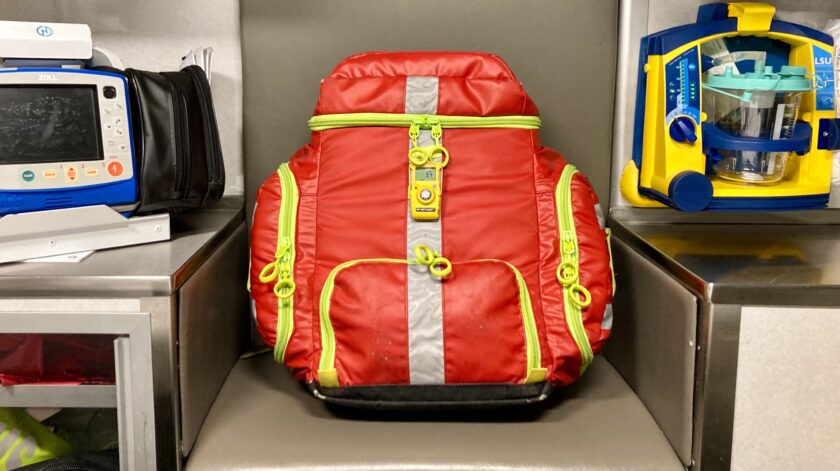A while back I wrote an article about my home first aid kit. One criticism I received really stuck with me. I was told my recommendations were “too EMT” for the average individual. Today I would like to put my little home first aid kit into perspective by showing you the contents of a paramedic jump bag.
This article contains affiliate links.
The Purpose of This Article
I sincerely hope this article illustrates just how basic the recommendations in that old article are. I put nothing in that article to make me look cool – just simple, user-friendly, life-saving equipment. It really bothers me to hear such basic stuff called “too EMT.” I have recommended that my readers spend thousands on a pistol, holster, spare magazines, ammunition, pepper spray, knives, and seek expensive training above and beyond what most LEOs get, yet have never been been told my recommendations are “too cop” or “too military.”
I sincerely hope this article changes some minds. The anchoring bias seems to have sold us on a skill level – #TQ and QuikClot in this case. This bias makes is view any skills and gear beyond that as “advanced.” Trust me, nothing in my home medical kit article was “advanced.” Your families’ lives are important. Having some basic skills and equipment to preserve them in an medical emergency seems every bit as important as the skills to shoot another person.
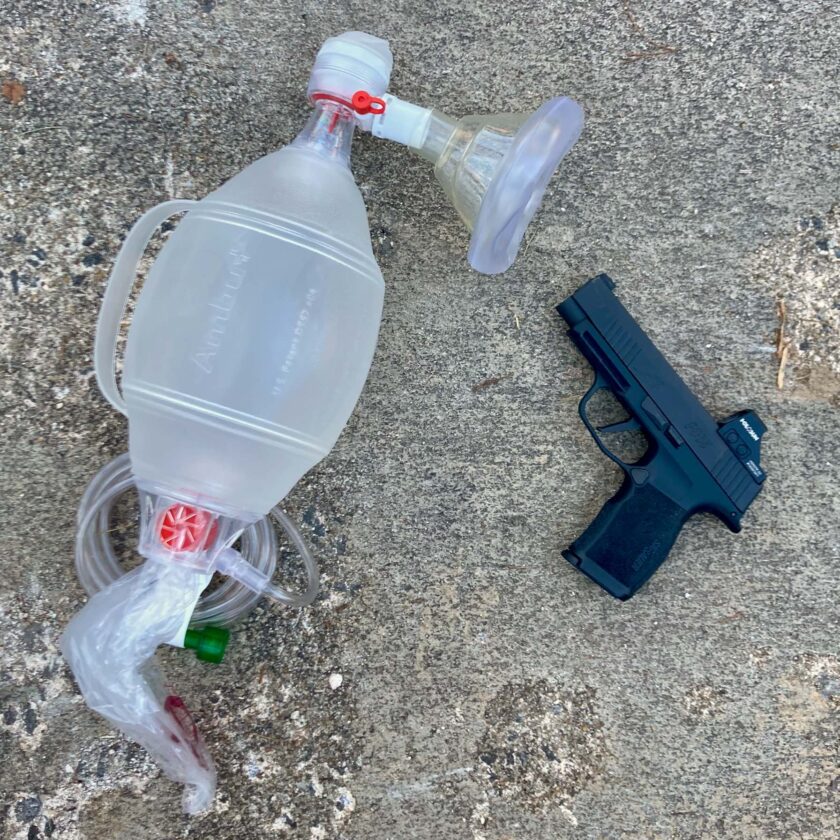
I also hope this article is interesting to some of you on its own. Some of you may be curious about the contents of the bag that EMTs and paramedics jump out with. This article should satisfy that at least some of that curiosity. Hopefully it also demystifies some of it. Sometimes I feel like medics like keeping what they do a mystery to bystanders. Not me – I don’t mind talking about it all, so let’s get into it!
The Paramedic Jump Bag
This is a random jump bag from my agency. Every truck in my agency has an identical bag. However, this is only representative of my agency – there are slight variations between most agencies and major variations between some, so realize this isn’t universal. Our agency isn’t on the cutting edge, but we’re also not in the stone age.
Keep in mind that this is far from everything we keep on the truck. The paramedic jump bag is kind of like the ambulance in miniature: scaled way, way down. Unfortunately it’s missing some critical items completely.
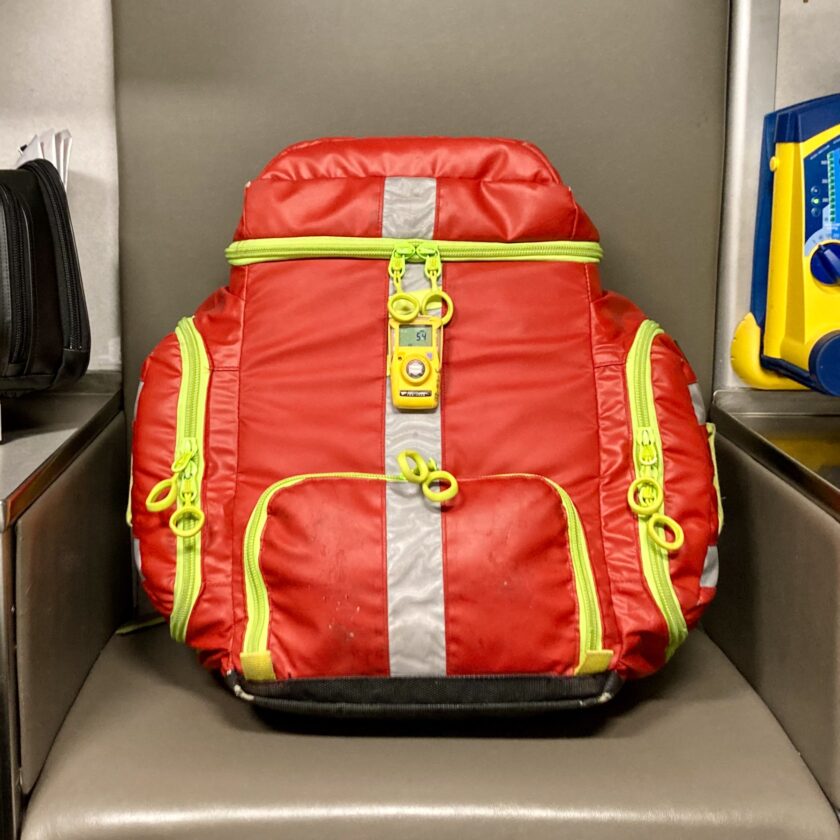
The bag itself is a Stat Packs G3 Clinician backpack. The bag is divided into six sections. There are two outside pockets, one on each side, and a pocket in the top lid. Each of these is dedicated to certain items which I will discuss further down. The other three sections are removable modules: IV, Medication, and Airway. Each of these will be discussed in detail. Let’s start with the outside pockets.
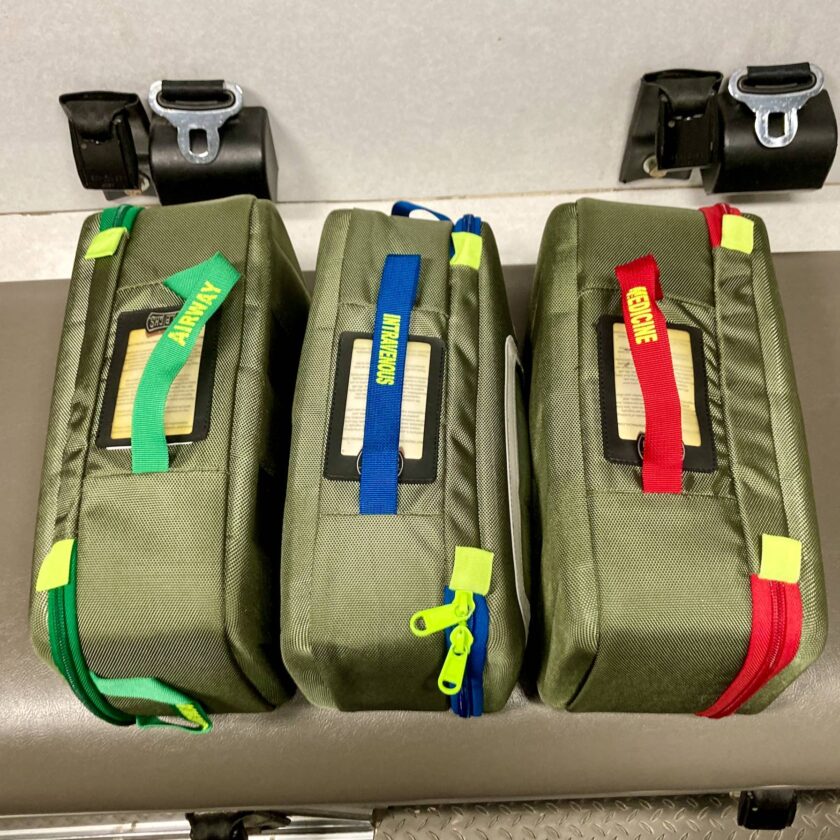
Right Outside Pocket: Diagnostics & Oxygen Delivery
The right outside pocket contains diagnostic equipment and oxygen delivery devices. The diagnostic equipment is pretty rudimentary and although contained in a paramedic jump bag, you should have all of these items. Each one of these can quickly and easily diagnose life-threatening emergencies.
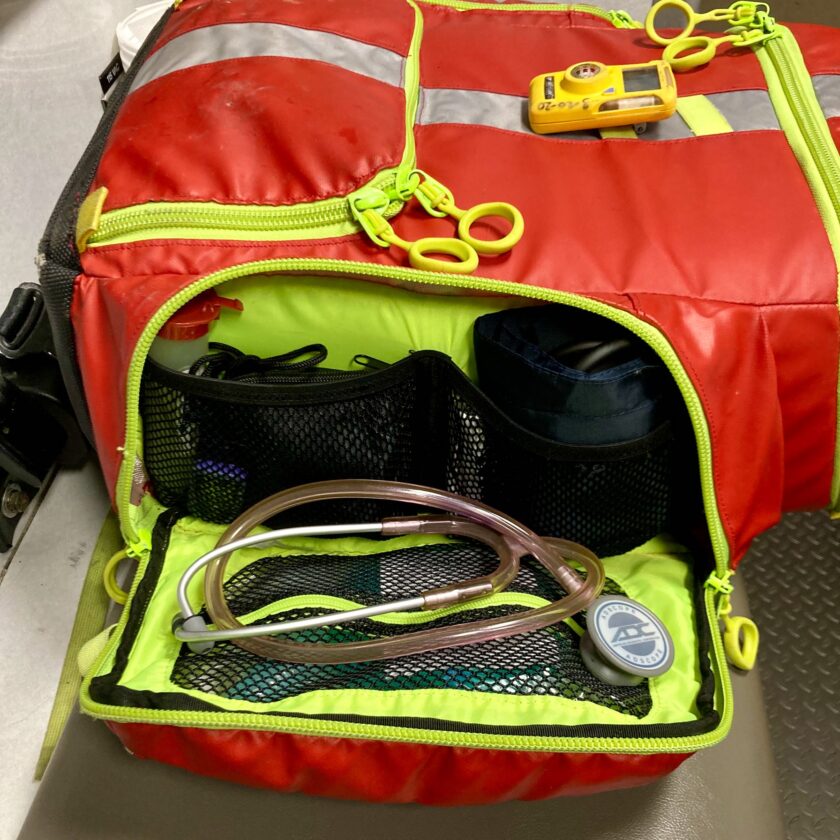
- Blood Glucose Meter
- Pulse Oximeter
- Stethoscope
- Blood Pressure Cuff
- Pupil Pen Light (this bag just happens to have two)
There are also a couple other things here that you probably don’t need, unless you have an oxygen tank. They are a nasal cannula, a non-rebreather mask, and a nebulizer for administering inhaled medications. The little plastic vial thing is a “sharps shuttle” for temporary storage of dirty “sharps” such as IV catheters, needles, etc.
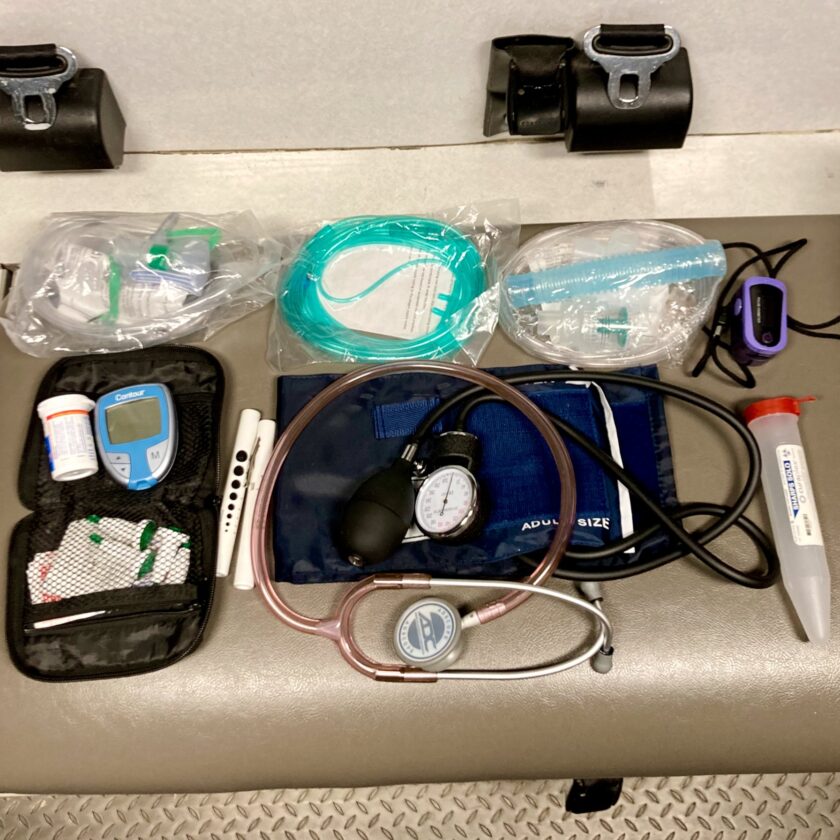
And that’s it for the first pocket. Let’s move on to the next one!
Left Outside Pocket: Trauma
The left outside pocket contains the fun stuff: bandages, tourniquets, and QuikClot – the stuff you’re all familiar with from TCCC.
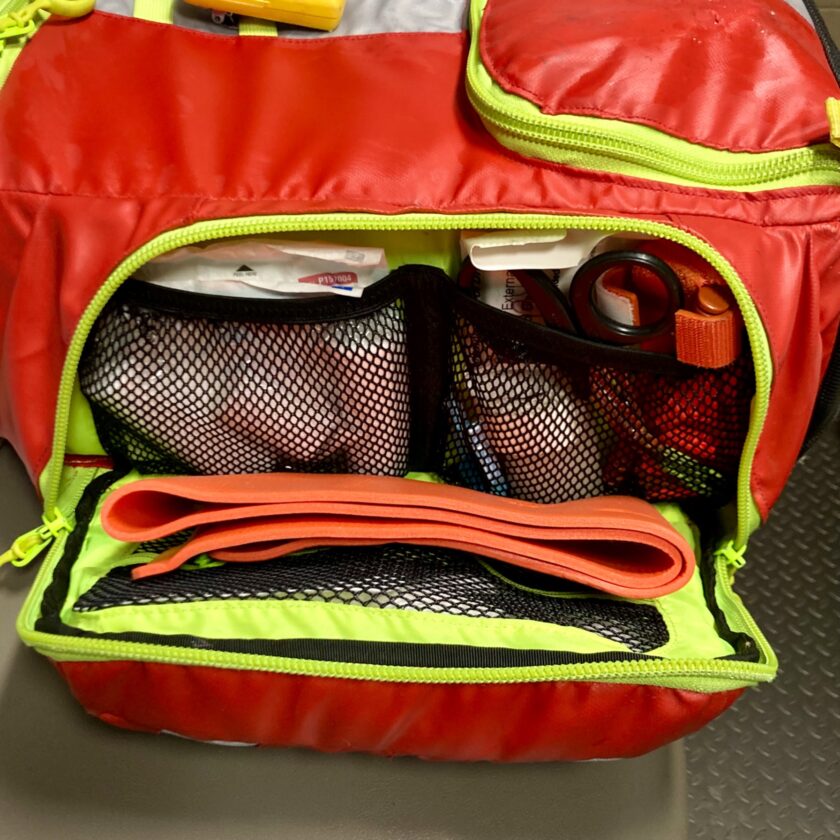
Here is the list of stuff inside. Again, none of the stuff in this compartment is terribly “high speed.” This is just good, basic life support gear. Honestly it isn’t a bad guide for what a serious home trauma kit should have. The stuff here is presented is in no particular order, just the way I laid it out, and goes from top to bottom, left to right.
- Tape
- 2x – 2″ roller gauze
- 2x – 4″ roller gauze
- Nose clip
- 5x individually wrapped 4x4s
- Tub of sterile 4x4s
- 2x – 5×9″ combine dressings
- 2x – triangular bandages
- CAT Tourniquet
- Asherman Chest Seal
- QuikClot
- Trauma shears
- Trauma dressing
- SAM splint, folded flat for storage
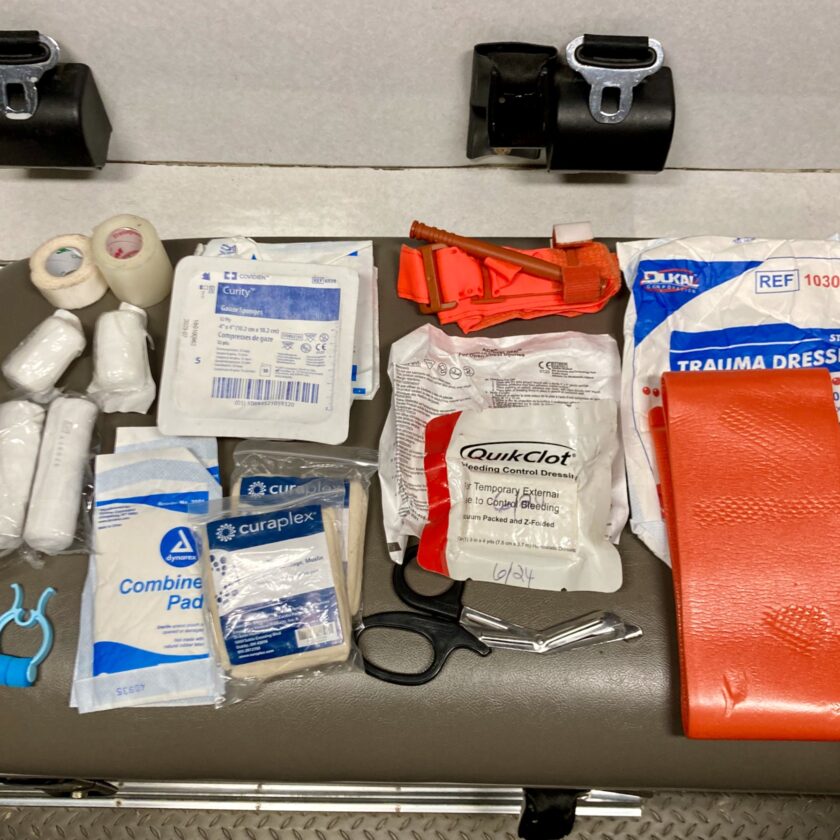
Again, this is all (OK, mostly – you’ll be fine without a nose clip) stuff that anyone should have and know how to use. These last two areas of the jump bag cover most of the stuff I talked about in my home first aid kit article, and we haven’t even cracked the lid. Speaking of, though, let’s see what’s inside.
Lid Pocket: Blind Airways & BVM
The lid contains a pocket that is fairly small and holds three “blind insertion airway devices” (BIADs). BIADs provide a very secure airway without the need for intubation equipment, and almost always function as a backup airway to a failed intubation. They are called “blind insertion” because no laryngoscope is required to utilize them – in my state even EMT Basics can use BIADs. We carry the three most common sizes of King airway: 4, 5, and 6.
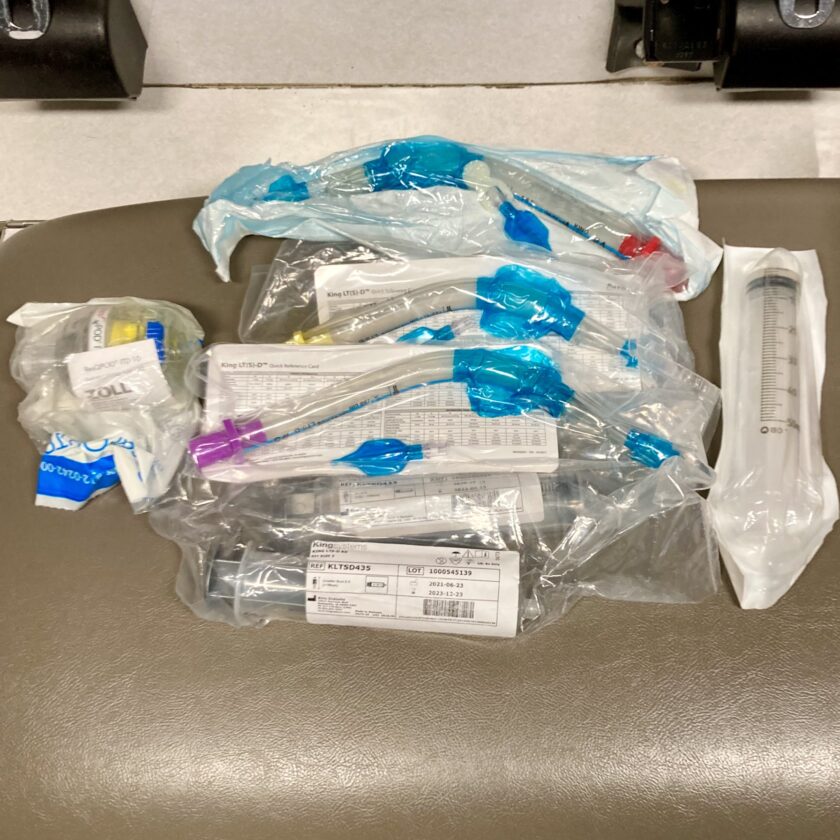
There is one other doo-dad in there (on the left): the ResQPod Impedance Threshold Device. This device is for use inline with a BVM on cardiac arrest patients, and really isn’t applicable to the average Joe who is seeking to provide first aid.
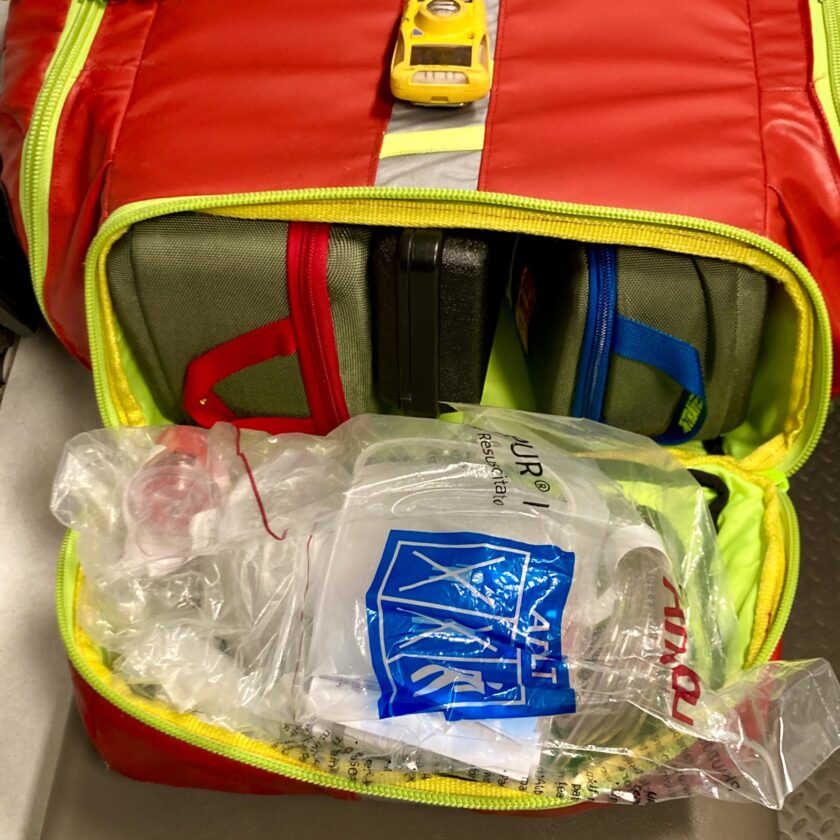
Though not technically in the lid pocket, there is also an adult Bag Valve Mask (BVM) at the top of the bag. A BVM seems like a fancy EMT tool but it isn’t. A BVM can drastically increase the effectiveness of ventilations, are simple to use, and cost under $20. It’s hard to imagine $20 better spent than this.
Interior Modules
So far we’ve looked at the exterior of the bag: the left and right pockets, and the lid. The interior of our paramedic jump bag contains three modules. The are IV (blue), Medication (red), and Airway (green). Let’s go through each one, in that order. The IV and Medication modules ride vertically and are accessible from the top of the pack.
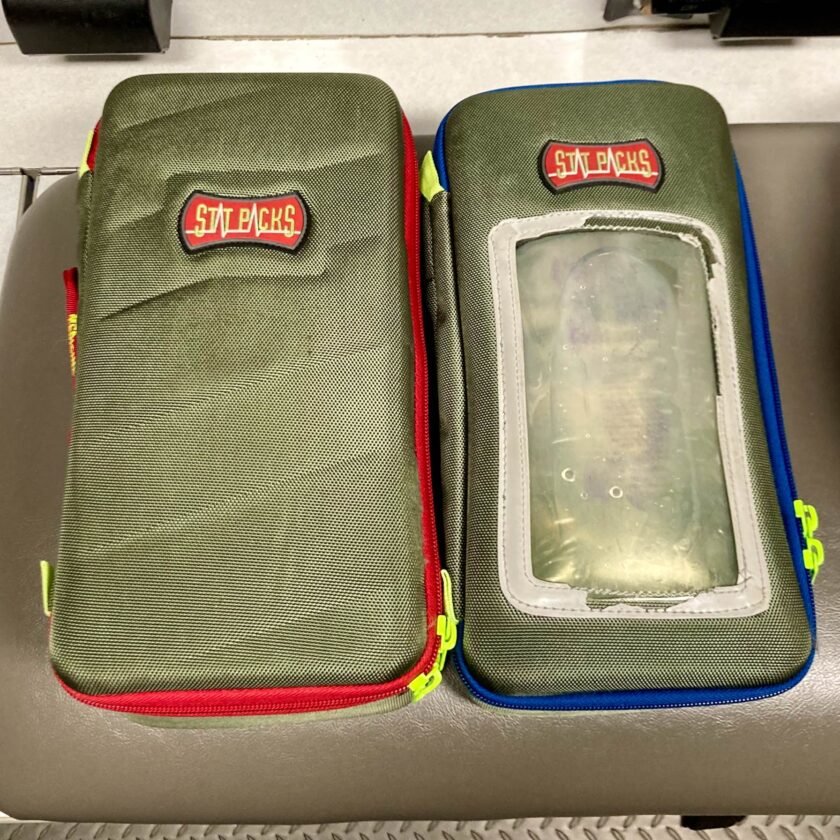
IV Module
The IV module contains supplies for starting an IV and giving fluids in the field. An IV is critical to being able to administer most of our medications. Our IV kit consists of three flaps.
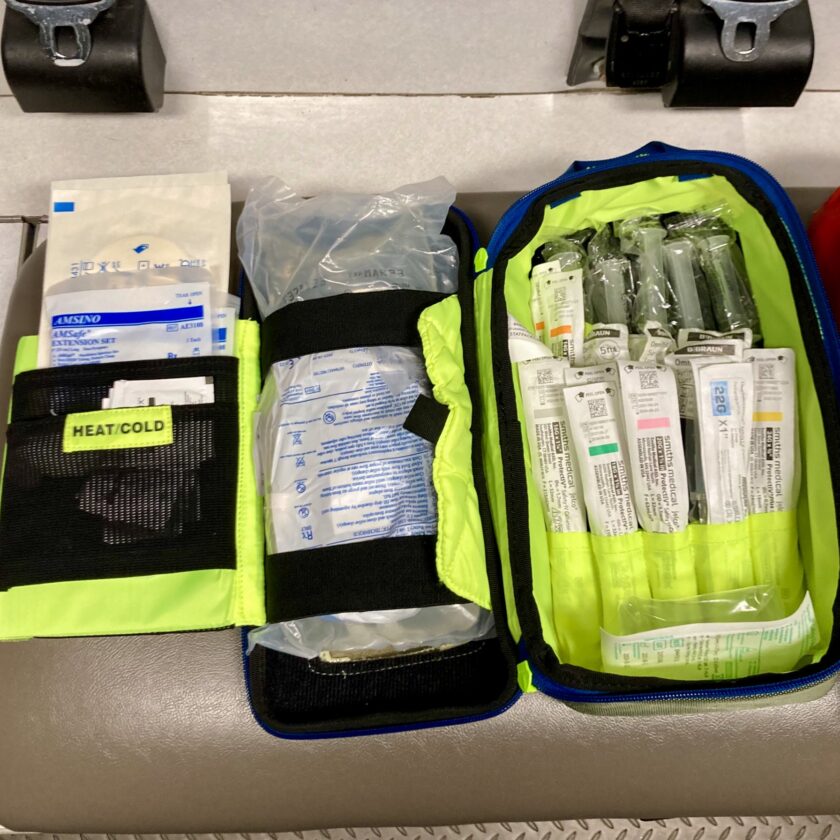
The first flap contains, mostly, IV catheters and flushes. Catheters are the needle that we use to start an IV and the small plastic tube that stays in the vein once the needle is removed. Flushes are syringes filled with sterile saline solution that we use to flush IV lines to push medication in, or clear blood from the line.
- 2x ea. IV catheters in sizes 24 (smallest), 22, 20, 18, 16, and 14
- 5x flushes
- 1x Huber needle (for accessing ports)
- 2x ea 1, 3, 5, and 10cc syringes
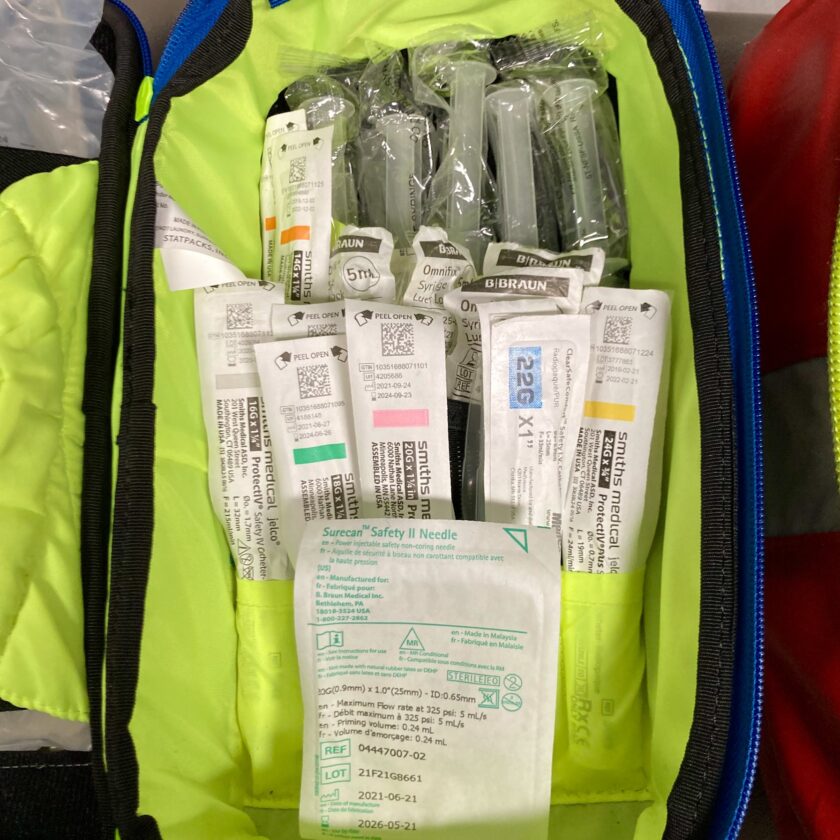
The center flap contains:
- 1x 1,000mL IV bag (Normal Saline)
- 1x 10-drop set
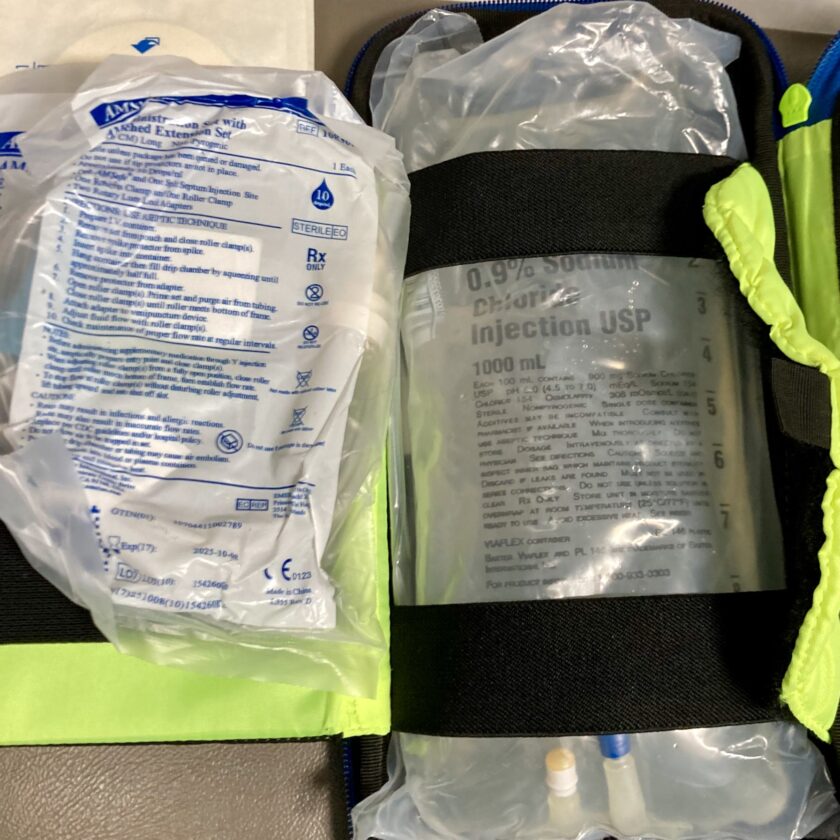
The next flap contains IV-starting stuff including:
- 2x IV extension sets
- 2x IV site covers
- Elastic bands
- Alcohol preps
- Gauze
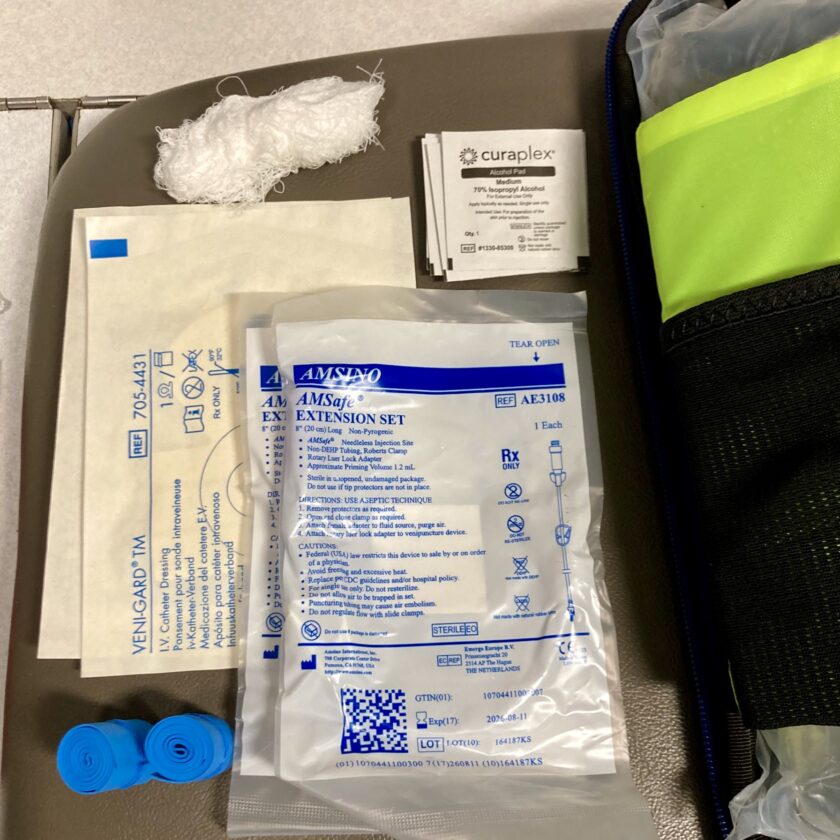
As a private citizen, working outside of a healthcare organization you certainly aren’t going to be establishing IVs, helpful though they may be. This is where we definitely cross the line into “too EMT.”
IVs are often established for the purpose of giving medication, so next up is the medication bag.
Medication Module
The medication module consists of medications we are likely to need on the scene, before we get the patient to the ambulance. The medications in the jump bag represent about half of the total number of drugs my agency allows us to administer.
Med Module Part I
The left-most flap consists mainly of administration tools. It contains:
- 5x flushes
- 2x ea. 1, 3, 5, and 10cc syringes
- 3x ea. 22 and 18 gauge safety needles
- 3x blunt filter needles
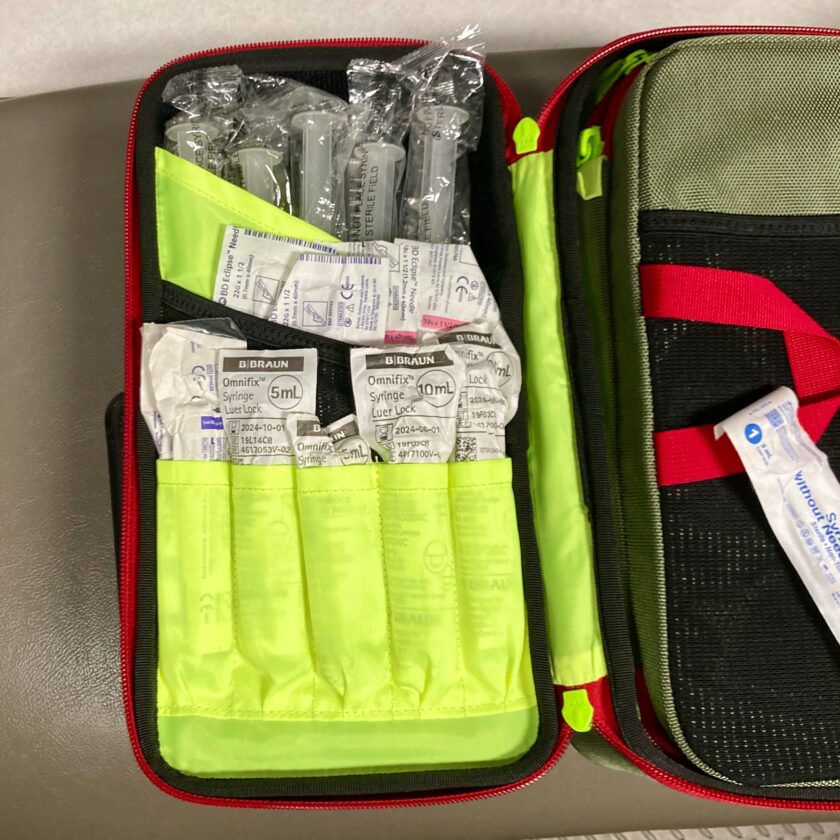
Med Module Part II
The next flap (the body of the module) contains medications in boxes. Each of these contains a vial of medication, plus a sort of built-in syringe that attaches to a needleless port. These medications are:
- D50 (50% dextrose solution), for treating low blood sugar
- Atropine, for treating a slow heartbeat and – rarely – certain types of poisoning
- Lidocaine, for treating cardiac arrythmias
- 5x Epinephrine 1:10, used in cardiac arrest
- 2x naloxone (Narcan), used in treating opioid overdose
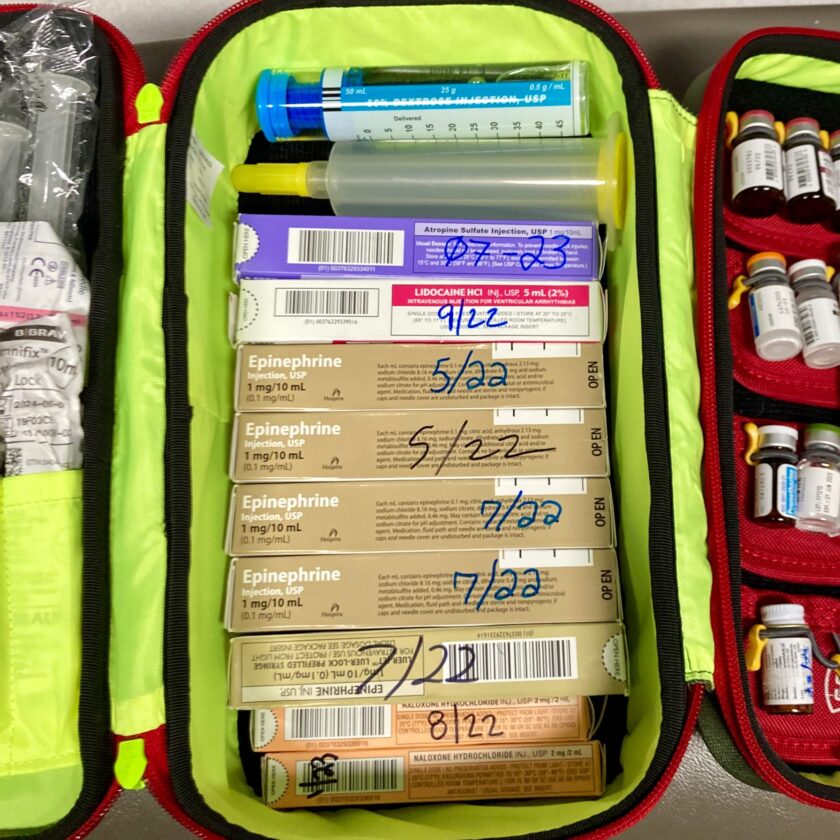
Med Module Part III
The next flap over contains medication in vials (and ampules). Our paramedic jump bag contains:
- 3x Amiodarone, a powerful cardiac anti-arrythmic
- Benadryl, for allergic reactions
- Glucagon (one vial of powder, one vial of water to reconstitute it), for low blood sugar and beta-blocker overdose
- Magnesium sulfate, for severe respiratory distress and seizures in pregnant patients
- Promethazine and Zofran, both anti-emetics used to relieve nausea and vomiting
- Epinephrine 1:1, for severe allergic reactions
- Nitroglycerin (tablets in the bottle, paste in the foil packets), for treating cardiac chest pain
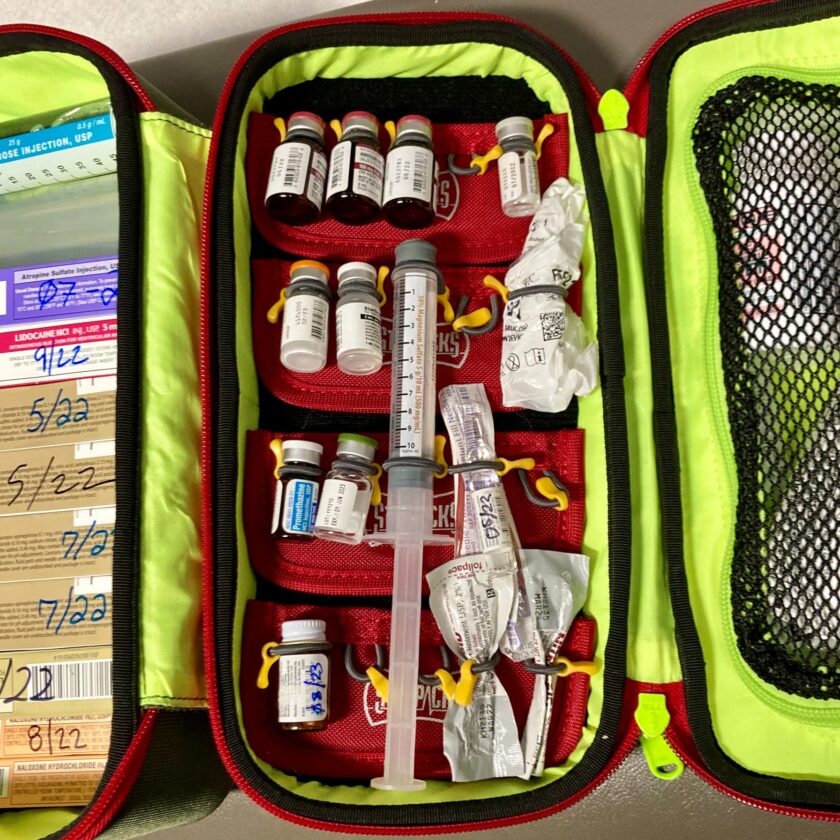
Med Module Part IV
Finally, we have the back flap that contains some odds and ends. Mostly these are here because they don’t physically fit super well anywhere else. They are:
- Carpu-Jet, used for administering medications that are packaged a certain way
- Aspirin, very important to give in cases of suspected cardiac chest pain
- Oral glucose, for low blood sugar when the patient can follow instructions
- Albuterol, a liquid that can be aerosolized and inhaled, used for breathing problems like asthma
- DuoNeb, albuterol and ipratropium bromide, used for breathing problems with “wet” lungs
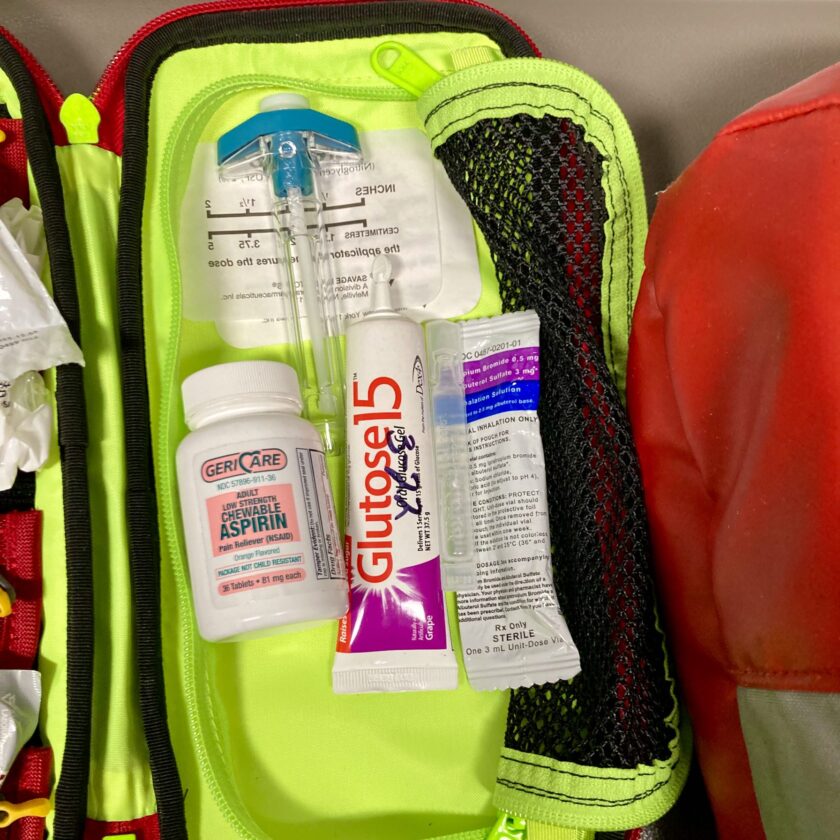
Except for maybe some of the stuff in the last compartment, you aren’t going to have any of this stuff. Even if you did, you wouldn’t be able to give most of it without an IV. And even with an IV you could seriously risk someone’s life by giving much of this without an ECG tracing and other diagnostic info. I am in perfect agreement that almost all of this module is “too EMT.”
Airway Module
The next module in the paramedic jump bag is the airway module. Securing an airway is incredibly important and this module is the bulkiest in the bag. It is also perhaps the most difficult to explain to the layman, so bear with me. Our airway module rides horizontally in the bottom of the paramedic jump bag, and can be accessed from the bottom zipper panel.
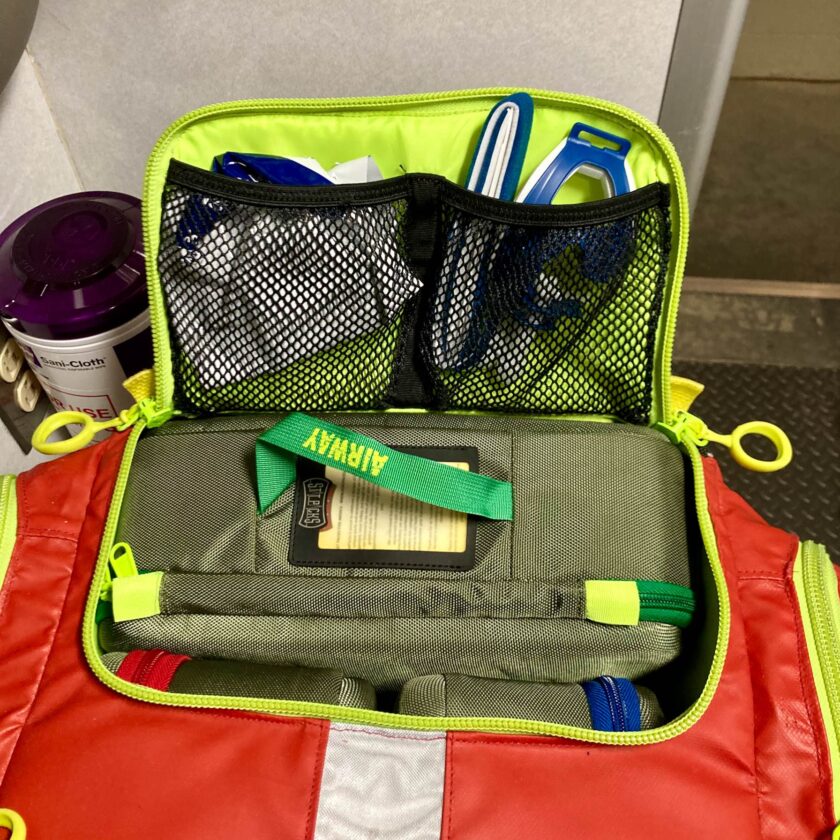
Airway Module Part I
The first, left flap of the airway module contains the failed airway stuff. This is the cool-guy stuff, the cricothyrotomy and needle decompression gear, and some other fun stuff.
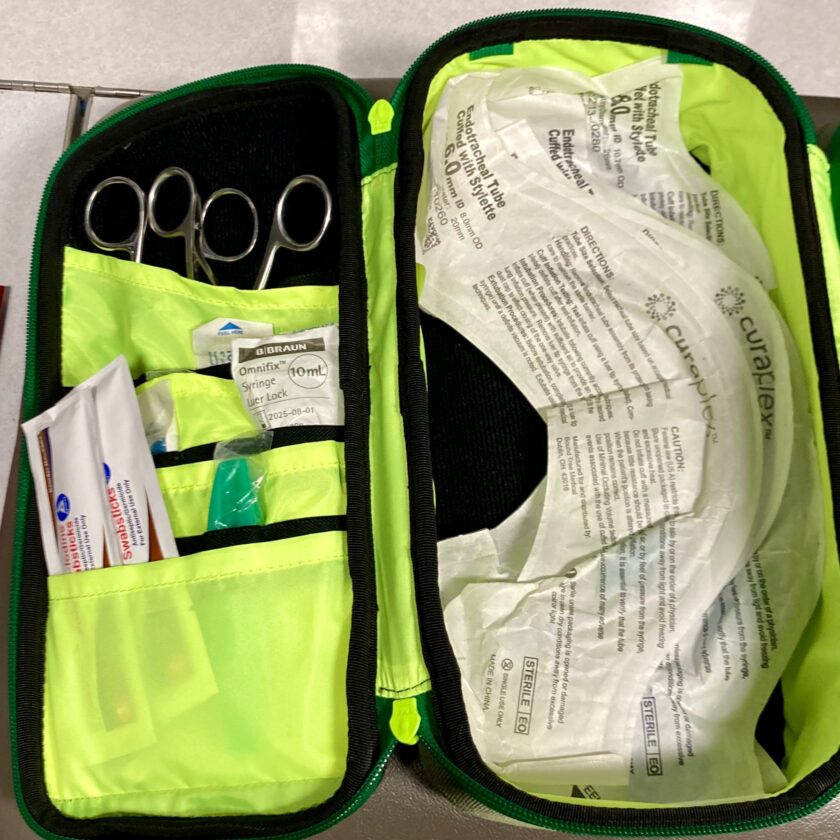
Here’s the full list:
- Magill forceps (the big metal things) for fishing foreign objects (bite of sandwich, Legos, etc.) out of throats
- Tracheal dilators (the small metal things), for maintaining and enlarging the hole created in one’s trachea when performing a cric
- Small packet of lube to ease insertion of endotracheal (ET) tubes
- Iodine swabs, for sterilizing the area before performing a cric
- 2x decompression needles
- 2x tongue depressors
- 10cc syringe for inflating cuff on ET tube
- Inline ETCO2 adapter, allows our cardiac monitor to measure CO2 exhaled through the ET tube
- Safety scalpel for cric procedure
- Bite stick
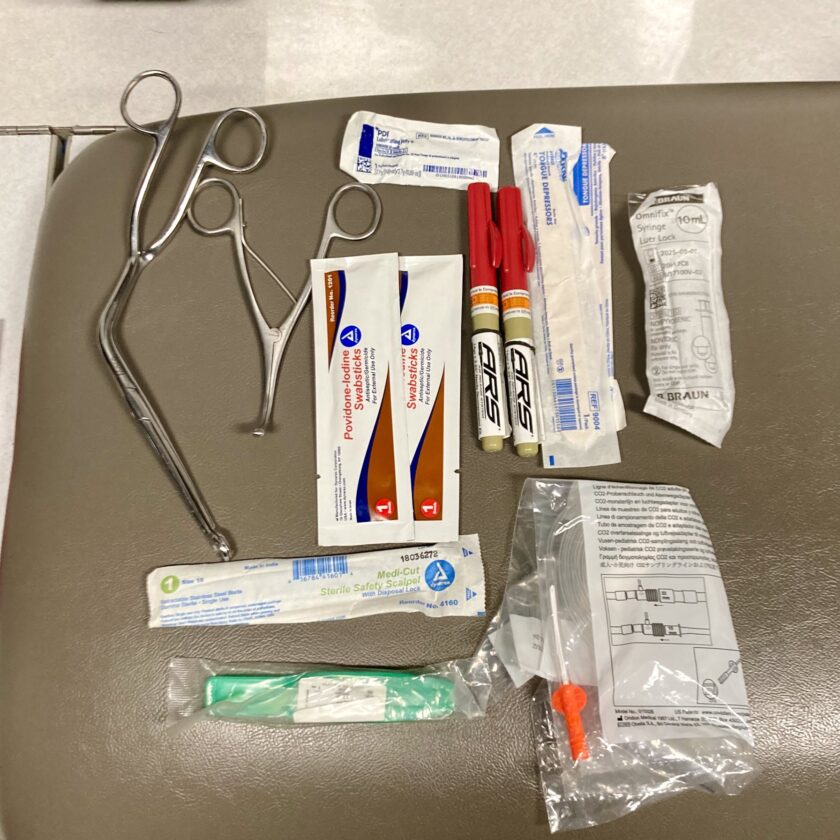
Airway Module Part II
Next we have the center compartment which just contains the ET tubes and a tube securing device (not pictured). We carry five tubes in sizes 6.0, 6.5, 7.0, 7.5, and 8.0.
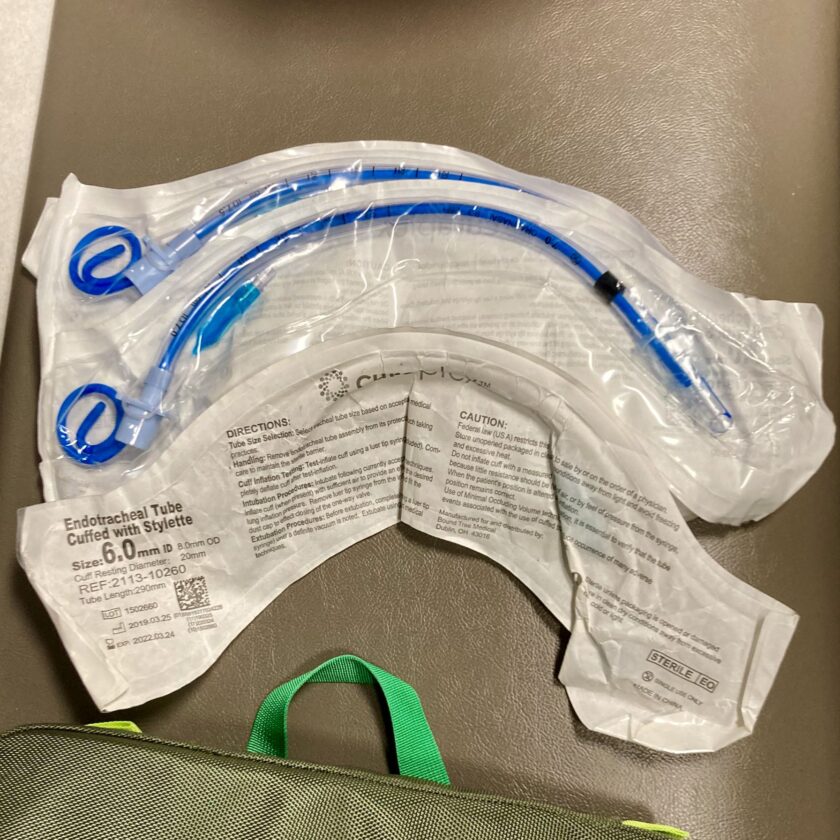
Airway Module Part III
The third flap contains two things: oro-pharyngeal airways (OPAs) and King Vision blades (one channeled, on unchanneled). OPAs are a really basic airway adjunct. I strongly recommend you get the training to use them in conjunction with a BVM (discussed above). This is basic, yet life-saving equipment!
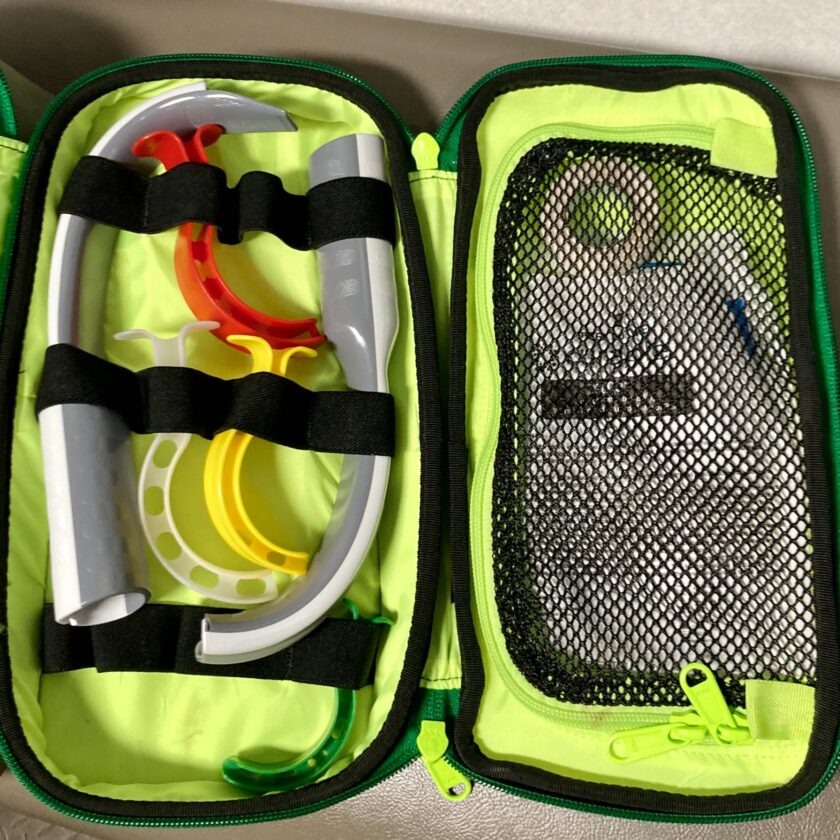
The King Vision blades are a different story, however. They are a very narrow-band tool, used for intubation – a pretty rare occurrence. These fit on our King Vision, a video-enabled laryngoscope. You salty medics out there don’t need to worry – we also have a direct laryngoscope, but we keep it in a dedicated intubation kit in the truck). The stuff in the zippered compartments are nasal-gastric (NG) tubes and suction catheters, nothing you’ll do for in-home, layman first aid.
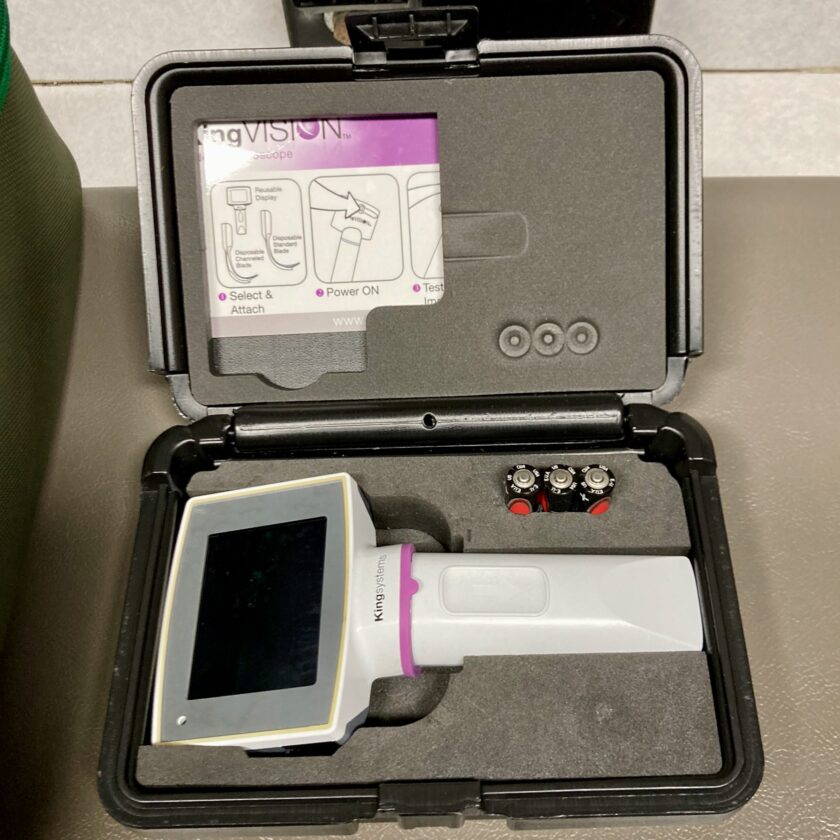
The King Vision is stored the bag, crammed between the IV and Med modules, in its own hard plastic case. Again, I don’t disagree that this module is “too EMT” for a home first aid kit, with the exception of the OPAs and possibly the decompression needles if you have a very high level of first aid training.
But That’s Not All…
There’s a lot of stuff in the jump bag, but it’s not all we use on a regular basis. It would be really hard to do our jobs without a whole bunch of other stuff. First and maybe the most-used item in the truck is our cardiac monitor. I have no idea how much these cost new, but refurbished models are available for sale online for north of $20,000.
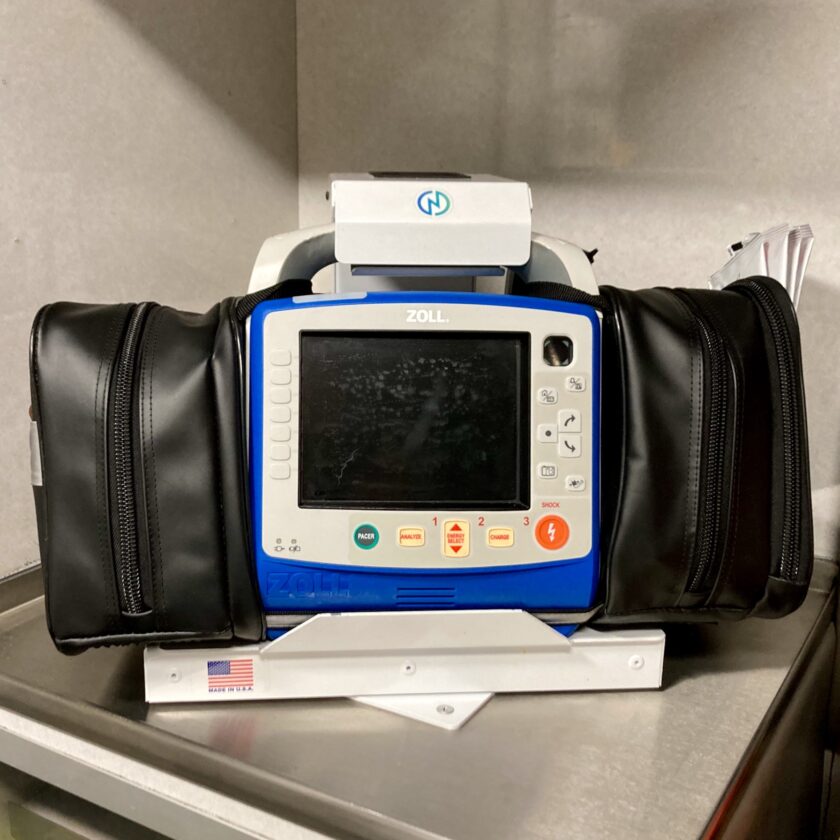
The monitor is absolutely essential to what we do – a ton of our cardiac medication is unusable without being able to identify a rhythm and rule out things like a high-degree heart block. The monitor lets gives us pacing, defibrillation, and cardioversion capabilities. It’s absolutely essential.
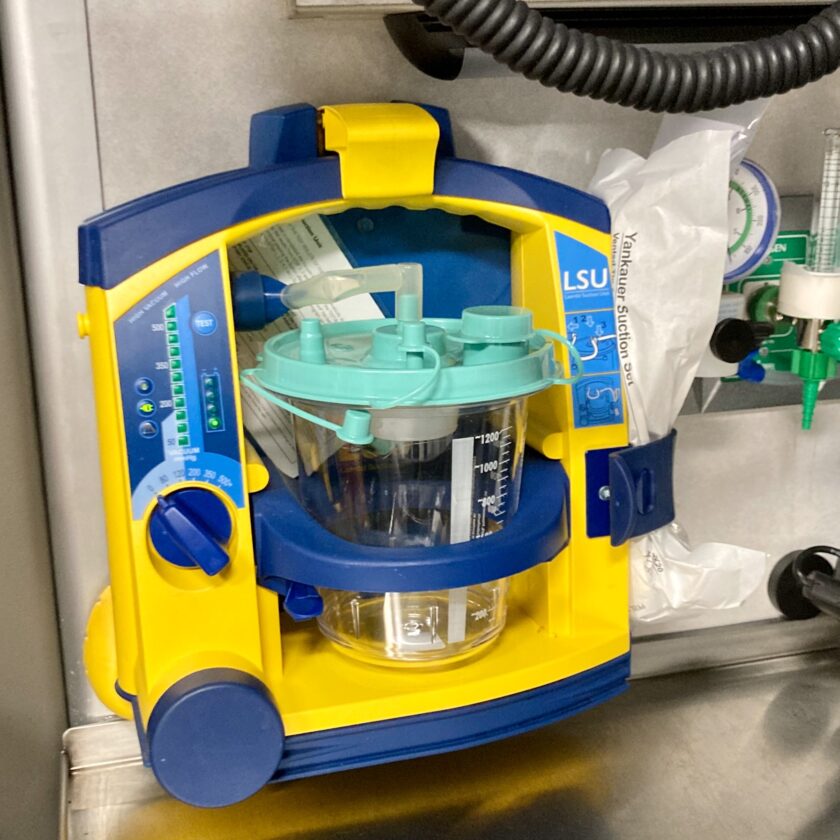
We also need stuff like a suction unit. Suction sounds like such a pedestrian thing compared to a $20k cardiac monitor but it’s incredibly important when you need it. And there’s stuff like oxygen which isn’t super “advanced,” but it’s hard for the average individual to justify keeping a big supply of.
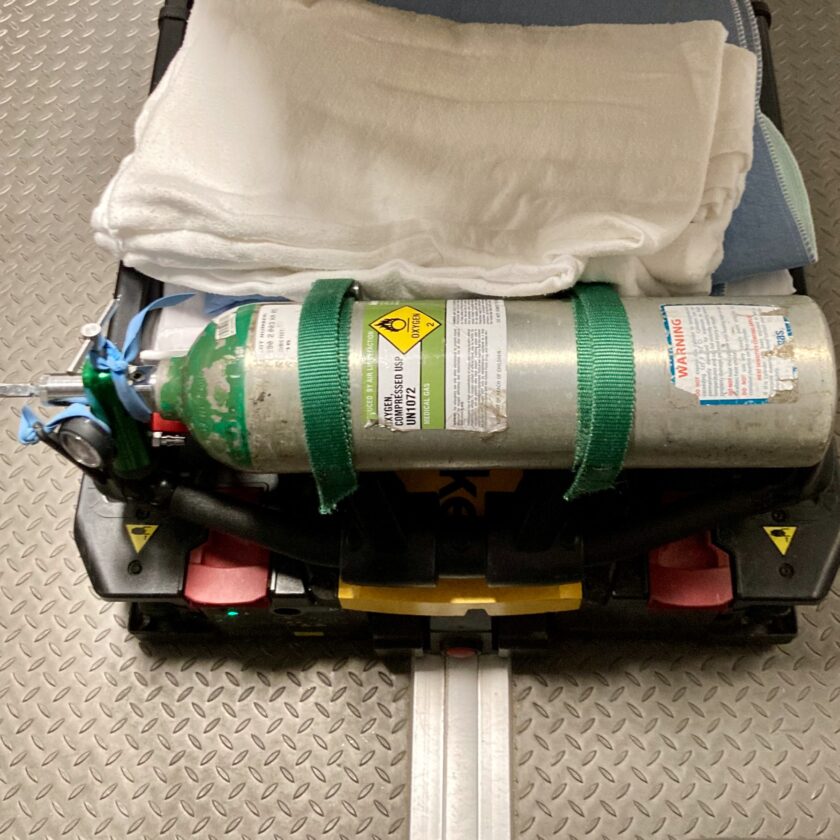
Closing Thoughts
Again, the purpose of this article is not to show you how cool I am and all the stuff I can do. Rather, it is to show you how basic some simple airway adjuncts and some bandages are. Paramedicine as I practice it isn’t advanced at all compared to the totality of medicine, and using an OPA, a BVM, or blood pressure cuff is about as basic as it gets.
I strongly encourage you to seek medical training. Blogger and author Paul Martin (I hope he doesn’t mind me calling him out here) is an excellent example of a guy who doesn’t work in healthcare but who recognized the need for medical training. As a result he went out and got his EMT certification, and has even attended the demanding NOLS Wilderness Upgrade for Medical Professionals. Not so he could get a job as an EMT – just so he could save the lives of his own family and be an asset to his community.
Regardless of who you use as an example, you should consider getting smarter on caring for the healthcare needs of your family. This begins with getting healthier, but it doesn’t end there. It also means being prepared for emergencies, and not just gun emergencies. I recommend you invest some time into attending an EMT class. It will be some of the most valuable time you’ve ever spent. It will make your family massively safer and make you a much bigger asset to your community.
